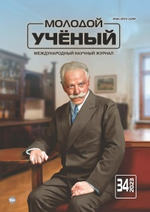Dörnyei's Theory of Motivation in second language acquisition explores the concepts of the L2 Motivational Self System, instrumental and integrative motivation, and motivational strategies. This theory highlights the significance of learners' self-perceptions, goals, and intrinsic interest in language learning. By implementing effective strategies such as goal setting, creating a supportive environment, and promoting learner autonomy, educators can enhance learners' motivation and engagement, leading to successful language acquisition.
Keywords: Dörnyei's Theory of Motivation, second language acquisition, instrumental motivation, integrative motivation.
Теория мотивации Дёрнеи в области освоения второго языка исследует концепции системы мотивационного «Я» второго языка, инструментальной и интегративной мотивации, а также мотивационных стратегий. Эта теория подчеркивает значение самооценки, целей и внутреннего интереса учащихся к изучению языка. Путем применения эффективных стратегий, таких как постановка целей, создание поддерживающей среды и развитие автономности учащихся, педагоги могут повысить мотивацию и заинтересованность учащихся, что приведет к успешному освоению языка.
Ключевые слова: теория мотивации Дёрнеи, освоение второго языка, инструментальная мотивация, интегративная мотивация.
Motivation plays an important role in second language acquisition (SLA), influencing learners' engagement and ultimate success in language learning. Among the various theories of motivation in SLA, Dörnyei's Theory of Motivation stands out as a comprehensive framework that shows the complicated interplay of psychological, social, and individual factors [1]. Developed by Zoltán Dörnyei, a prominent scholar in the field, the discussed theory offers valuable insights into understanding and enhancing motivation in language learners. This article aims to delve into the main concepts of Dörnyei's Theory of Motivation, providing a detailed exploration of its key components.
At the core of Dörnyei's Theory of Motivation lies the L2 Motivational Self System, a concept that highlights the crucial role of the self in shaping motivation [1]. This system comprises three key components:
– Ideal L2 Self: The ideal L2 self represents learners' vision of their desired self in terms of language proficiency, communicative competence, and cultural integration. It reflects learners' aspirations, goals, and dreams regarding their language abilities.
– Ought-to L2 Self: The ought-to L2 self reflects learners' perception of their obligations, duties, and external expectations related to language learning. It includes the social and cultural pressures learners may experience, such as family expectations, educational requirements, or professional demands. Meeting these external obligations can serve as a source of motivation for learners.
– L2 Learning Experience: The L2 learning experience refers to learners' actual encounters and interactions during the language learning process. Positive learning experiences, such as success, praise, meaningful interactions, and enjoyable activities, contribute to the enhancement of motivation. So, negative experiences, such as failure, frustration, or lack of engagement, can detract from learners' motivation.
Dörnyei's Theory of Motivation distinguishes between two primary types of motivation: instrumental and integrative [2].
- Instrumental Motivation: Instrumental motivation arises from learners' practical goals and utilitarian purposes. It encompasses learners' desire to acquire language skills for professional advancement, academic success, passing exams, or accessing specific opportunities. Instrumental motivation is primarily driven by external factors, such as extrinsic rewards or tangible benefits associated with language proficiency.
- Integrative Motivation: Integrative motivation, in contrast, stems from learners' intrinsic interest, personal identification, and desire to integrate into the target language community and culture. It reflects learners' genuine fascination with the language and their aspiration to establish meaningful connections with native speakers. Integrative motivation is characterized by a genuine curiosity and a willingness to immerse oneself in the target language society.
Dörnyei's Theory of Motivation emphasizes the importance of implementing effective motivational strategies to enhance learners' motivation and engagement [3. Some key strategies include:
- Goal Setting: encouraging learners to set specific, challenging, and achievable goals helps provide direction and purpose to their language learning journey. Clear goals that are aligned with learners' ideal L2 self can fuel motivation and provide a sense of accomplishment when achieved.
- Creating a Supportive Environment: establishing a supportive and inclusive learning environment fosters a sense of belonging and psychological safety for learners. This environment encourages learners to take risks, express themselves, and engage actively in the learning process. Supportive environments can be created through positive teacher-student relationships, collaborative activities, and a classroom culture that values diversity and mutual respect.
- Promoting Autonomy: Allowing learners to have a sense of control and autonomy over their learning process is crucial for fostering intrinsic motivation. Providing opportunities for learners to make choices, set their own learning goals, and take ownership of their learning can enhance their motivation and sense of responsibility.
- Enhancing Learner Engagement: Engaging learners in interactive and communicative activities that are relevant and meaningful to their lives can boost motivation. Incorporating real-life contexts, authentic materials, and technology can create a dynamic and engaging learning environment that captures learners' interest and promotes active participation.
- Providing Feedback and Rewards: Timely and constructive feedback plays a vital role in motivating learners. Feedback that acknowledges their progress, highlights areas for improvement, and provides guidance can fuel their motivation and promote continuous growth. Additionally, offering intrinsic rewards such as recognition, praise, and a sense of accomplishment can reinforce learners' motivation and encourage them to persist in their language learning endeavors.
To sum up, Dörnyei's Theory of Motivation in second language acquisition provides a comprehensive framework for understanding and enhancing learners' motivation. The L2 Motivational Self System emphasizes the significance of learners' self-perceptions, aspirations, and external expectations in shaping their motivation. The distinction between instrumental and integrative motivation highlights the role of both external and internal factors in driving learners' engagement and persistence. By implementing effective motivational strategies, educators can create a supportive and engaging learning environment that fosters learners' motivation and facilitates their language learning journey.
References:
- Dörnyei, Zoltán. Motivation in Second and Foreign Language Learning. Language Teaching, vol. 31, no. 3, 1998, pp. 117–135.
- Dörnyei, Zoltán. Motivation, Language Identity and the L2 Self. Bristol Centre for Applied Linguistics, University of the West of England, 2009.
- Gardner, Robert C., and W. Lambert. Motivational Variables in Second Language Acquisition: A Social Psychological Perspective. Canadian Journal of Psychology, vol. 13, no. 4, 1959, pp. 266–272.







